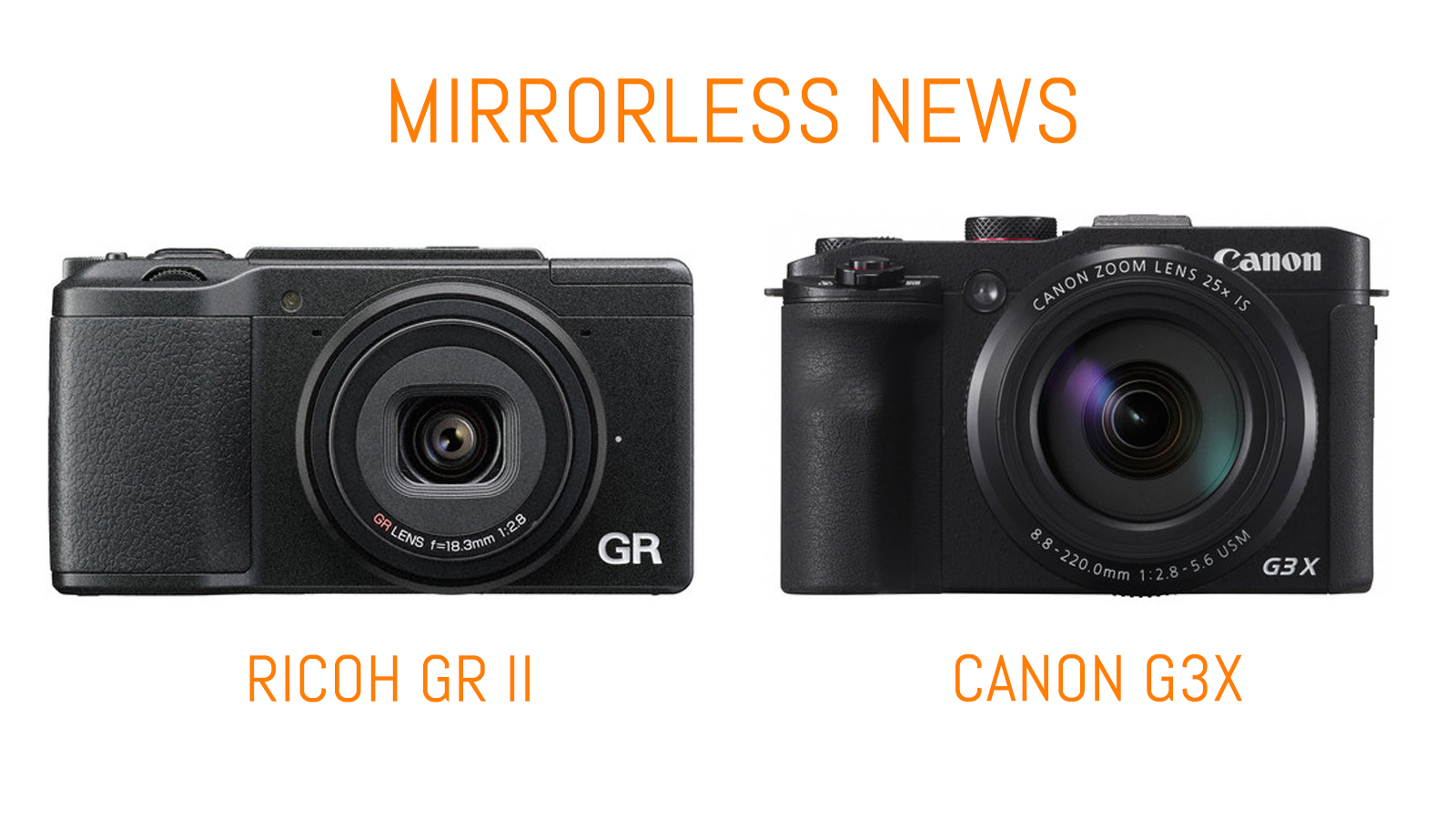This week’s final pair of announcements come from Ricoh and Canon, the former with the long-awaited successor to the popular GR premium compact, and the latter with a competitor of the Sony RX10 series and Panasonic FZ1000.
Ricoh GR II
The second generation Ricoh GR II builds upon the success of the original GR, a premium compact camera released in 2013 that has continued to be a popular choice amongst street photographers due to its portable size, large sensor, relatively fast aperture and appealing focal length. It is also well-loved for its monochrome capabilities.

At first glance, it doesn’t appear as if much has changed. The camera retains almost the same body as its predecessor, the same GR Engine V processor, the same 16.2MP APS-C sensor and ISO range (100 to 25600) and the same 18.3mm (28mm equivalent) f/2.8 fixed lens with a two-stop ND filter.
Dive under the surface, however, and you’ll find that Ricoh has updated the camera in numerous ways – some subtle, others more significant.
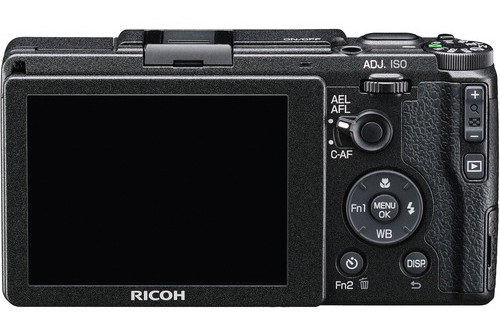
The biggest addition is WiFi and NFC connectivity. While it may not seem like anything exciting given that most modern cameras have this capability, the GR II is unique in that it can theoretically connect to any device that can run a browser and has WiFi. This includes not only standard Android and iOS devices but also the lesser known operating systems and even your computer’s desktop browser. Once connected, you have full remote control over every feature of the GR II with a live view feed. It will be compatible with the Pentax K-S2’s GR remote and Image Sync applications shortly after the launch, and will have support for a wireless flash control system.
Though the sensor remains the same, Ricoh claims that there is now better high-sensitivity noise compensation with improved resolution and contrast. Other additions that affect image quality include a new in-camera Raw processing mode called “Original ambient brightness” which produces a film-like rendering, pixel mapping, six new creative effects, and an enhanced and more accurate auto WB.
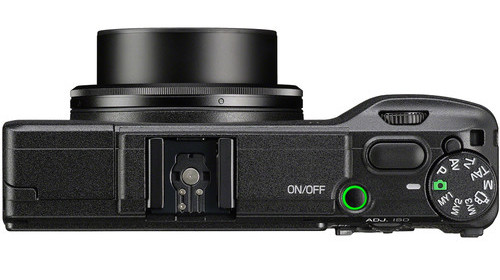
The GR’s movie capture mode has also received a few necessary updates. You can now adjust your autofocus, exposure and creative effects while you record.
The camera still shoots at 4 fps in Raw/JPG like the previous model but the difference is that you can now shoot 10 Raw frames after the initial 4 fps burst before it slows down. The battery life has also improved, from 290 shots on the GR to 320 shots on the GR II.
You could easily call the Ricoh GR II a case of “If it ain’t broke, don’t fix it.” The original GR was and still is a hit, and the mark II simply fills in the technological gaps that today’s consumers require. It will become available in July at $800, which is about the same price as the original.
Canon Powershot G3X
A popular trend in digital cameras today are premium “superzoom” with a 1-inch sensor. The Sony RX10, with its 24-200mm zoom, kicked off the trend a year ago, and has since been followed by the Panasonic FZ1000 (25-400mm), the second generation RX10 II with the same zoom as the original, and now the Canon Powershot G3X, whose zoom range beats them all at an optical zoom range of 24-600mm (25X).

However, a zoom this long ultimately calls for a more limited aperture range. While the RX10 twins have a constant aperture of f/2.8 and the FZ1000 ranges between f/2.8-4, the G3X is the least appealing at f/2.8-5.6. In short, those who require a brighter lens will certainly be more tempted by the offerings from Sony and Panasonic, whereas those who want the farthest reach possible won’t have to think twice about the G3X.

Two other points that might sway the user towards the competition are the lack of an electronic viewfinder and inferior video performance. An EVF would have been an intelligent addition, as shooting with your eye to the viewfinder gives you more stability at the longer focal lengths. As for video, it is hard to justify only including 1080p HD video recording at 60p when the competition offers ultra high resolution 4K video.
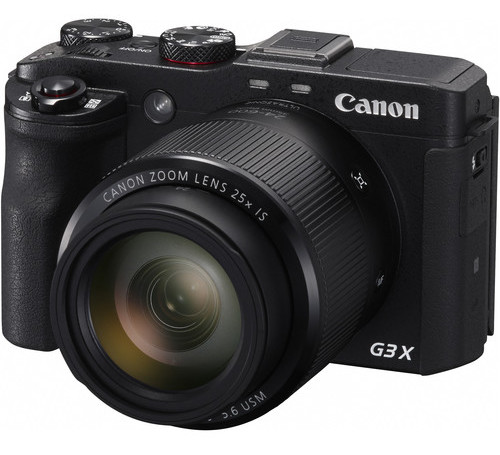
Finally, Canon states that the G3X employs 5-axis stabilisation, though it isn’t the same technology found in the likes of the Olympus OM-D series and Sony A7 II / A7r II as it uses two optical axes and three digital axes.
The G3X has a 20.2MP sensor (the same as the one found in the compact G7X), an ISO range of 150-12800, a water resistant body with a substantial grip and various external controls, a tilting touchscreen that can flip up 180 degrees for selfies, 5.9 fps continuous shooting, a DIGIC 6 image processor, a built-in ND filter, a headphone and mic jack, and WiFi and NFC capabilities.
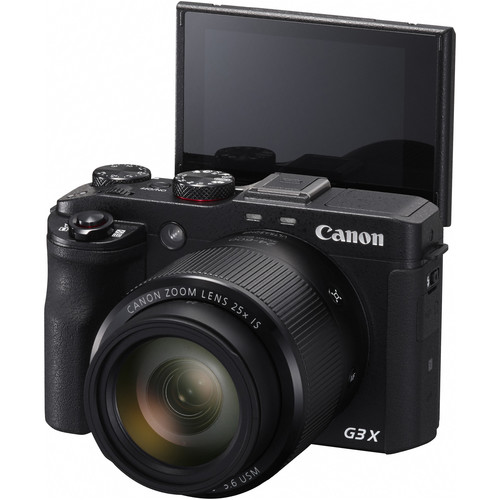
While it lacks some of the more modern features you might expect from a 1-inch superzoom, the Canon G3X remains an interesting addition to the line-up thanks to its extremely long telephoto reach. It will be available in July 2015 for around $999, making it quite a bit cheaper than the RX10 II (see our hands-on review here) but more expensive than the FZ1000.
